Each colorland, especially a beginner, dreams that Clematis, causing curiosity and delight.
Classification Clematis
The strength of flowering of luxury handsome men is defined primarily by their faithful selection. For all the numerous and diversity of species, varieties and forms of Clematis, there is a convenient classification. It grows plants in the color and shape of flowers, helps to decide on the right agrotechnology.
The magnitude of the flower, Clematis:
- small-bedroom (up to 5 cm in circle);
- large-flowered (more than 5 cm).
In turn, large-flowered divide on:
- women
- bush
- herbaceous
Clematis varieties are divided into groups.
Vitelleel - bush lyanoes 3-3.5 m. Buds drooping. Complex leaves, twice ceris. Large folders, up to 12 cm in circle aimed up. Painted mainly in red-pink, velvety purple tones. Characteristic of the lush (up to 100 flowers) and long summer flowering. Disabled pollination of purple Clematis (S. Viticella) with plants of other groups.
Jacmana - large bush lyanoes. Shoots 3-4 m, have a well-developed root system. Buds - extended. Flowers are large, more often than single, odorless, from blue-purple, to purple shades. Flowering long and abundant on shoots of the current year.
Lanuginosis (woolly) - bush lyans. Shoots are thin 2.5 m. Leaves with whole edges, simple or troch. Buds are multi-level. Wide open, single, large flowers are mostly white, pink, blue shades. Flowering in May - June massively, on last year's shoots.
Florida - bush lyans up to 3 m. They have opened flowers, diverse color, light tones, 8-12 cm in circumference with 6 petals. It was obtained by crossing the flowery Clematis (C. Florida) with varieties and views of other groups.
Patzenis (spread) - White Liana 3-3.5 m. Opened, single flowers around a circle up to 15 cm. Coloring from light, bright blue-purple, to saturated purple tones. Some varieties of this group are terry. Good for southern regions of Russia.
Integrifyria - plenty, stripped semi-staples up to 1.5 m, rarely up to 2.5 m. Have semi-column flowers, various colors in the form of bells, a circle up to 12 cm. Simple and complex leaves. Flower in summer. Obtained by crossing from solisted Clematis (C. Integrifolia).
Depending on the flowering time and cut groups distinguish:
- early (Spring)
- medium
- lodnimyurovy (end of June - July).
How to choose Clematis Sedes
In healthy Clematis root elastic, without damage and thickening.
Check for seedlings at least three roots less than 12 cm.
In autumn Clematis, developed vegetative kidneys should be visible, in spring, the presence of a minimum of one escape is necessary.
Select location
Clematis - light-sounded. Sit plants in solar or slightly shaded places.
Clematis need intensive watering. However, excessively moistened, wetlands, where groundwater level is less than 1 m are unacceptable for them. Liana is not planted in places of drain and melt water. When planning the landing of Clematis, consider the natural removal of water from the bush.
Clematis do not like wind sections. The optimal place to disembark the plant is about 0.7 m along the buildings. Performing the function of the support, they protect against the wind in winter and in summer, do not damage and finish the numerous stalks of the plant.
Orientation relative to the parties
In the case when several Clematis bushes are planted, and the plot is small and narrow, do not save at a distance between the bushes, make it no less than meter.
Place the ranks in the direction from the north to south. The rays of the Sun then better illuminate the space between the rows, not allowing the development of diseases. The upper part of the plant with such a landing is lit throughout the light day. It is necessary to consider the fact that the flowers are directed to the southern and eastern sides.
For better lighting of single support for Clematis in the morning, place it from the west to the east. The angle of deviation in the north-east should be equal to about 10 degrees.
Preparation of landing pit
For clematis sitting in the fall, pull the soil in the spring or a month before landing. When landing in early spring, the soil is prepared late autumn. A peeled or loamy base, a loose, rich in humus, is preferable, from a weakness to a slightly alkaline. Good for the landing of Clematis Grokes, where the beans were previously grew up, velvets, peas, marigolds, lupins. Listed plants (their residues) are usually drunk together with soil.
Interesting! Clematis are capable of growing successfully in one place for more than 20 years.
So that the pit for landing was not like a large, shapeless flower pot, her sides are bakingly. The pit is made deep (over 50 cm), in the case of heavy, clay soil increase the size of up to 70 cm. For a uniform distribution of moisture in dry weather and ensuring proper power supply to the root Clematis root system, the bottom of the pits are shoved by the pods to the depth of the teeth. Add about 15 cm of fine crushed stone, coarse sand or broken bricks for drainage and poured a pre-cooked soil in a pit.
Preparation of the soil mixture
- Salt the land from the landing pit.
- Clean the soil from the roots and perennial weeds.
- Mix two buckets by humus or compost with the same number of peat and sand.
- Add:
- 100-150 g - sulfate and potassium superphosphate;
- 200 g - mineral fertilizer;
- 100 g - ash;
- 100 g of chalk (can be replaced by haired lime).
Mix everything and put into the landing hole, laid out 10 cm to the top level.
During the day before landing, moisten the pit with five veins of water. Pour in the intervals, the soil is then better soaked.
What should be the support for Clematis
Sturdy, hard support is installed in the center of the landing pit. For this, pipes with a diameter of 3-4 cm are used.
For a uniform distribution of Clematis shoots, it is convenient to use solar supports. They make a wooden cut, impregnate it with a olifa or verse.
Using a chain mesh or pull a caprochy twine with a cell 15 * 15 cm. In young escape, it is enough to skip between symmetrically arranged twine threads, 2-3 growing sheets, and it is further fixed on the support.
Good for Clematis Natural Supports in the form of Chubusnik bushes, Forzition, Weigela. Traditional supports in the form of arches and shirm.
Speeciously look at Clematis, located horizontally. For example, on the hoops with a diameter of 1 m, covered with a grid. Hoops are attached to a galvanized tube at different levels.
Features of landing
It is better not to plunge the weakened seedlings of Clematis when landing. So, they will come faster. The soil to the required level is added gradually, as they decide growing shoots. When falling in the fall, the seedlings are not vertically, but put them horizontally to the ground.
After sinking in this way, Clematis seedlings often have already sprouted shoots. To preserve these sprouts, they are covered with glass, plastic cans or completely plunge the earth, which is cleaned after 2 weeks when plants adapt in a new place.
The active development of the Roshkov Clematis is achieved by increasing the power of the root system. For this, the bush, at the age of 2-3 years digging, wash the rhizome from the ground and pinch the white tips of the roots with 0.5 cm. Thanks to this procedure, next year, Clematis blooms before two weeks, and the flowers have a larger size.
Many Clematis are poorly rehabilitated after a transplant. Tip - Liquid buds after landing, not allowing their flowering in the first year. This will allow plants better getting like.
If you are unknown a garden group and a variety of cracms, try to cover the shoots for the winter to determine what kind of bloom occurs.
Features of care
After the first year of planting clematis often suspend their growth, even with the height of 20 cm and more. This phenomenon occurs when lack of moisture and improper care. Can resume growth, strengthening watering, introduction into the soil of nitrogen fertilizer (urea). Along with this, additional forage plants produce additional trace elements and fertilizers (complete), in the calculation of 20-40 grams per 10 liters of water, or dilute, fermented mullein 1:10.
Alternate organic or mineral supplements. One time in summer month pour weak clematis (2.1 g) solution of boric acid and manganese (2-3 g in 10 liters water). In addition, the plants are sprayed with urea (Article 0.5. Tablespoons per 10 liters of fluid).
Spring bushes clematis poured lime milk (1 sq - 10 liters of water and 200 g of lime).
In the summer, the aerial part of clematis die because of a breakdown or a transplant. Do not rush to dig up the shrub. The soil is stored dormant germ buds, from which later, possibly as early as next year, there will be shoots.
Sometimes large-clematis with bushes of more than five years, shrinking flowers. This happens due to lack of irrigation. The shrub grows, the root system is changed. In a typical irrigation water is now spread over the soil surface, without penetrating into the zone where the active roots. To correct this deficiency, flush with the surface of the soil, making the indentation from the bush around 30-40 cm, 3-5 digged flower pot. During irrigation goes targeted filling water tanks and moisture gradually goes to the roots.
Pest Control
Often occurs in clematis twisting and drying of the tops of young shoots. It is caused, first of all, again, the lack of moisture. The reason could also be the defeat aphids and bugs. The easiest is to use a decoction of tobacco dust. When such a failure processing applied insecticides.
Clematis many pests, including rodents, deterred planting strong-smelling plants: pyrethrum, coriander, tarragon, sage, chernokornya. To this end, while maintaining a clematis in winter, using dried stems of these plants.
Features seasonal pruning clematis
For clematis pruning is extremely useful. Afraid of pruning clematis is not necessary. The main thing - remember the rule: what kind of crop plants will depend on the timing of its flowering. How - let's see.
Try to pick up a collection of plants so that the flowering is consistent. There are Clematis that bloom exclusively in the spring, then a group of plants blooming in summer; Then those whose flowering summer is crowned - Autumn Clematis. The task is to remember when Clematis bloomed and based on this, plan their trimming time.
Pruning spring Clematis
Flowering early clematis takes place on last year's shoots. These shoots do not cut off - lush flowering. Periodically make a corrective trimming, to give the shape of the kit. The optimal option is a slightly cropping the plant immediately after its flowering, removing the dried blossoms, at the same time getting rid of old and damaged branches. If the bush is thickened, part of the faded, weak shoots cut down to the base. It will give impetus to the development of strong shoots of the current year, they actively bloom the next year.
Pruning medium-old Clematis
Clematis, the flowering of which comes at the beginning of summer, reveal buds on last year's shoots, then, the process extends to young shoots, this year. Let's deal with such clematis. Cut the blurred shoots, while retaining two thirds of them for early flowering for the next year. Damaged and broken shoots also delete. Leave the winter only the strongest branches.
Sometimes a two-step trimming is carried out: first, after flowering, cut off the contiguous shoots of the previous year, or completely cut them out if the bush is thickened. The shoots of this year are removed in autumn, before the shelter of the plant for the winter. For early flowering, only the overgrown shoots of the current year are removed.
Trimming Late Clematis
Late the blooming Clematis form flowers only on young shoots, so in front of the shelter for the winter cut all the shoots to the first real sheet or to the base. If you keep the part of last year's shoots from Lian this group, their flowering will come significantly earlier than the shoots of the current year.
The special group of Clematis is grassy clematis. They all shoots are removed from the fall to the base, regardless of flowering time - as usual, come with perennials. Of course, shoots can not be cut, however, it will significantly reduce the decorativeness of the bush.
The reproduction of Clematis
Small-colorful Clematis are bred from seeds. In the dilution of large-flowered Clematis, exclusively in vegetative methods are used:
- Division
- Hilling
- Reproduction by chains
- Shining
- Reproduction in water
- Graft
According to the technology of the process of vegetative reproduction of Clematis, two ways distinguish:
- The rooting of the new plant takes place until it is separated from the mother's bush (weaning, gluttoning shoots, dividing the bush)
- Roots at the escape or its part, grow up after separation from the old bush (shilling, vaccination).
Features of division
After dividing the old bushes of Clematis, on the part of the shoots that was in the ground, there are no visible kidneys. So, it seems, only at first glance. Enjoy the remaining part in an inaccessible for sunlight, a wet place in the garden or in a greenhouse.
In the spring, after 15-20 days, the once sleeping kidneys on the top of the shoots will come to life and beanted into the growth. The woken part of the bush with roots and kidneys do trin, and the rest again stuck. They come so as long as sleeping kidneys will again and again awake. Thus, you can get up to 15 new plants.
Features of shilling
For better rooting of Clematis cuttings, pieces (5 * 5 cm) of swables or potatoes are used. To do this, remove the lateral processes from the cutken. Insert the remaining basic sprout, in the potatoes or swarm cubes. Thus, the muscles, treat the root growth stimulant, and fall out in the greenhouse.
An excellent shower for the growth of Clematis roots is a solution of honey (1 tsp. On a glass of water temperature). The cuttings of the day contain in it before planting.
In order to avoid the overheating of the greenhouse, it is covered after the plants of the plant, stretched on the frame. As a result, an air layer is created.
Supplement information about landing Clematis materials of this video.
Try to take advantage of these tips. Without any doubt, Clematis thanks you for such professionalism and care, delightfully abundantly blossoms!

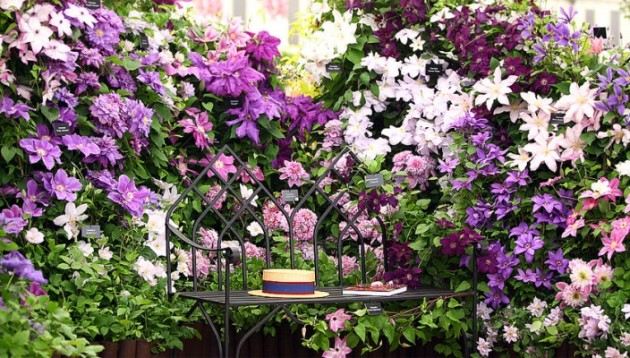
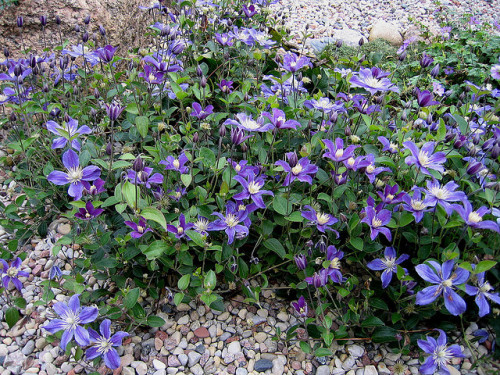
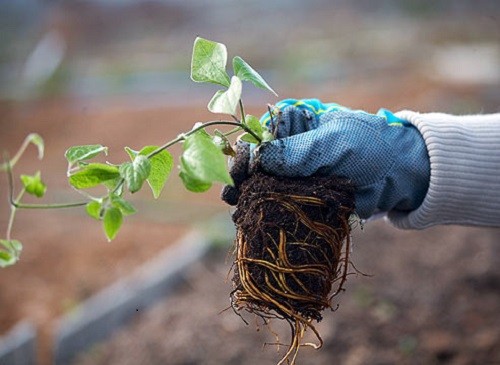
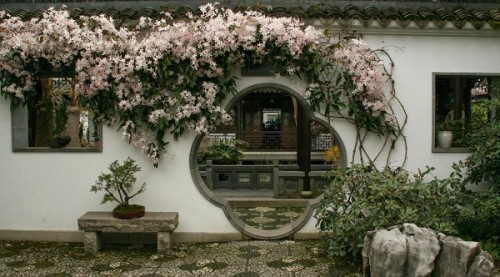
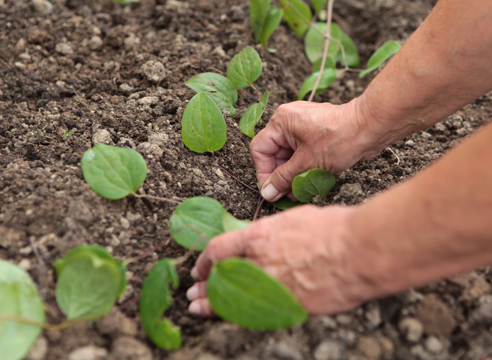
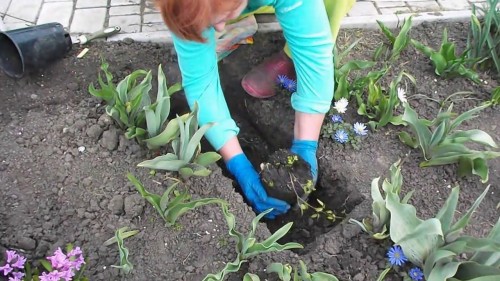
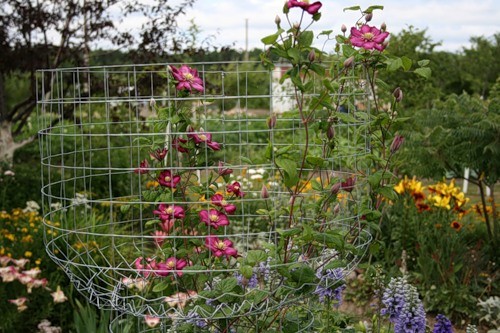
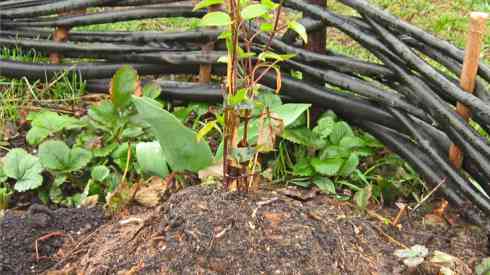
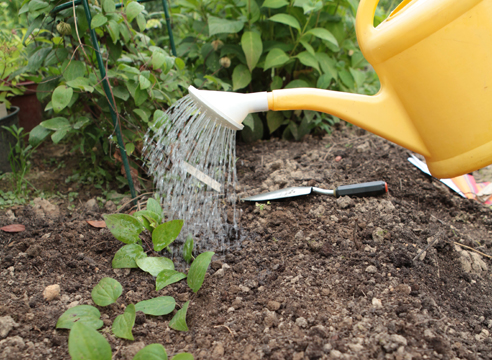
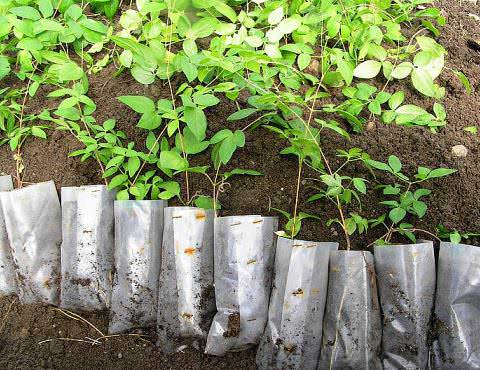












 Start a discussion ...
Start a discussion ...